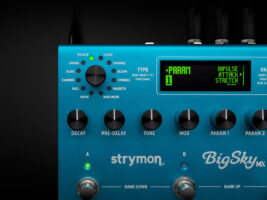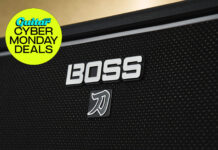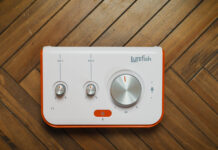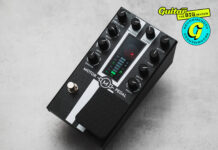
11 great reverb pedals, tested and reviewed
I’d argue that the most essential effect on any pedal board is reverb. Obviously the style of music you play, your instrument of choice, et cetera, will all play a factor in what is most indispensable to you. But, along with drive, I believe the quality and scale of your reverb choice has the most impact on your tone. Because of this, it’s something you should spend a good amount of time thinking about and researching. But, it’s unlikely you’re in a position to test dozens of pedals and find the one that’s best for you. And watching countless YouTube demos is time consuming and can get confusing. So, I’m here to help.
Over the course of my life I have tested more reverb pedals than I can count — well over three dozen, including 11 specifically for this guide. I’ve been playing guitar since 1994 and reviewing music gear professionally since 2019. Am I the final word in pedaldom? Of course not, but I feel more than qualified to at least point you in the right direction. So, without further ado, let’s get to the pedals.
Best high-end multi-mode reverb: Strymon BigSky MX
Image: Strymon
[products ids=”7hBBHJ4DOvdPvVTGwdqFeL”]
If money is no object and you want the most versatile reverb you can get your hands on, the Strymon BigSky MX is it. It excels at the sort of subtle room or spacious hall reverbs that you can leave on 100-percent of the time and make a cornerstone of your sound. But it can also do epic ambient soundscapes and modulated weirdness not based in anything real. In addition to 11 original algorithms created by Strymon, the MX comes loaded with a collection of IRs (impulse responses) harvested from vintage reverb units and real world locations.
The real fun comes when you start loading in your own IRs (which are simply .wav files), which can be anything from the resonant ring of your bathroom tiles, to just a recording of a coin spinning on a table. This gives you the freedom to create reverb or delay-style effects that are completely unique to you. Add in the ability to stack two reverbs together and a streamlined interface that requires shockingly little menu diving and you’ve got a powerhouse pedal that is just at home on a mastering channel as it is on guitar or synths.
Best budget multi-mode reverb: Electro-Harmonix Ocean’s 11
[products ids=”4ymNlrI7xuwDZcWH8ly7Q,1hyAbhZKSnnxnXnQBavnWt”]
If you want some of that flexibility offered by the BigSky MX, but don’t have BigSky bucks, the EHX Ocean’s 11 should be at the top of your list. As the name suggests, it has 11 algorithms covering everything from bread-and-butter spring sounds, to modulated ambience, to infinite sustain. The algorithms are all pretty good, too. They’re not quite to the quality or realism of the BigSky, and the shimmer isn’t my favorite, but they’re more than up to the task.
The biggest complaint I have about the Ocean’s 11 is the interface. The smaller size gives you fewer hands-on controls. Plus some algorithms have multiple modes and there are unlabeled secondary controls that are unique to each algorithm. These secondary controls aren’t something you will use all the time, but because of that it’s highly unlikely you’ll ever commit them to memory: so don’t lose the manual.
Best reverb for tinkerers: Meris Mercury X
[products ids=”2CD5rm85s8ZFYWUSSjoCnz”]
Choosing between the BigSky MX and the Meris Mercury X might seem difficult at first. They’re both deep effects pedals that cover a lot of territory and offer best-in-class reverb algorithms. But, I think once you ask yourself two simple questions the answer will present itself. Do you favor real world sounds or unnatural expansive ambience? And are you more concerned with ease of use or infinite customizability? If you answered the latter to both of those then the Mercury X is what you’re looking for.
While the interface design is clever, it still requires a lot of menu diving, and there’s almost no way to create a patch from scratch in under a minute. But there’s no denying the stunning quality of its eight reverbs. The real selling point though, is the wealth of options for shaping your patches beyond just picking an algorithm. There’s LFOs, an envelope follower, a sequencer, additional “processing elements” for mangling your sound and you can completely customize the internal signal chain. The Mercury X is deeper than even most reverb plugins for your DAW.
Best Lo-Fi Reverb: Old Blood Noise Endeavors Dark Star Stereo
Image: Richard Purvis
[products ids=”6IWmJTtdC755smcXN298Ds”]
Sometimes what you want isn’t the highest quality, most realistic reverb sounds. Sometimes what you’re looking for is something that sits firmly in the uncanny valley. Something that is a little rough around the edges. Something that showcases its imperfect digitalness, rather than hides it. That is the Dark Star.
The new Old Blood Noise Endeavors Dark Star Stereo takes what made the original from Old Blood Noise Endeavors an instant classic and turns it into a modern lo-fi masterpiece. There’s two glassy pitch shifters, bit crushing, a brutal saturator, a multimode filter and a feedback loop. Plus there’s a programmable aux footswitch that you can use to trigger filter sweeps, pitch bends or infinite sustain. Oh, and as the name implies, it’s stereo now. The Dark Star Stereo is a personal favorite and, If you like ambient sounds with some grit, this is the pedal for you.
Best budget ambient reverb: Walrus Fundamental Ambient
Image: Walrus Audio
[products ids=”4jyXunG0iow6S9flDnhl3R”]
The Walrus Audio Slö is an incredible pedal. One of the best ambient reverbs out there and a great value at $219. But, it’s a little too pricey to qualify as “budget” in my book. Its little sibling the Fundamental Ambient, however, clocks in at an almost unbeatable $100 and covers most of the same ground.
The Fundamental Ambient has three modes that offer a rumbling lower octave, a bit of lo-fi haze or gentle modulation. The controls here are greatly simplified, so if you’re picky about the amount of lo-fi distortion or the depth of your modulation, the Fundamental won’t cut it. But if you want something that is going to sound great out of the box, require little to no tweaking and is cheap enough to border on impulse purchase this should be at the top of your list.
Best do-it-all (including reverb): Eventide H90
[products ids=”1fGCVRWai7tnY43xWSWFmm”]
Ok, the Eventide H90 isn’t a reverb pedal. It’s arguably the most powerful effects pedal in the world. It’s a workstation that lets you combine any two of its 66 effect algorithms to create high-quality studio-grade effects patches. Among those algorithms are 14 reverb effects that do everything from emulate real spring tanks, to recreate classic digital reverbs from the past, to conjure otherworldly expanses.
The Blackhole algorithm is so iconic that it even has its own dedicated pedal. (If you wanted to save some money you could pick that up for just $249.) But the other 13 are not to be dismissed either. Add in what is probably the best polyphonic pitch shifting in the business, the excellent HotSawz guitar synth engine and CrushStation, which is one of my favorite digital distortions ever.
Best weirdo reverb: Death By Audio Rooms
[products ids=”JvLqUdmMFMoisQNf96Jbn”]
Do your tastes tend towards the odd, unnatural and extreme when it comes to your effects pedals? Well then, you need to check out Rooms from Death By Audio. Other pedals here can conjure fantastical synthetic ambience, but none makes it the entire centerpiece of its existence in the way Rooms does. There are six algorithms with the namesake Room, being the most “normal” of the bunch. But this is not some ultra-realistic recreation of a spacious studio or empty club, instead it’s a decidedly digital, slightly metallic reverb that you might find in old-school rack effects units.
From there things get really out of this world, with aggressively resonant bandpass filters, crushed sci-fi drones and seasick warbles. One of my favorite features is the Alt switch which allows you to jump to a completely different set of parameters (on the same algorithm) so you can let certain notes melt into the ether or scream out for attention.
Best high-end single-mode reverb: Vongon Ultrasheer
$449
the Ultrasheer is not the most versatile reverb. Nor is it the most practical. It’s pricey and eats up a lot of space on a pedalboard, but I’ll be damned if it doesn’t sound incredible. The algorithm itself is based on the plate reverb from the 1978 classic Lexicon 224. (You’ll also find a take on this sound in the Mercury X.) The hall effect from that unit often gets most of the attention, but personally I much prefer the plate setting. There’s also a beautiful vibrato built-in that goes from subtly lush to woozy drunkenness.
There’s no menu diving here; It’s probably the most approachable device on this list. And, while this doesn’t make the Ultrasheer sound any better, it’s easily the best looking reverb pedal on the market. Because of its bulk and slightly awkward top-mounted jacks it’s best suited to life on a desktop, but if you have space to spare and favor ease of use of flexibility the Ultrasheer is hard to beat.
Best real-deal spring reverb: Surfybear Compact Reverb Unit
$375
If you don’t have a spring reverb tank in your amp and refuse to accept anything but the real thing, your best bet is probably the Surfybear Compact Reverb. Now, to be fair, in this instance “compact” is a relative term. Since it uses a real spring the size of the unit has a very real impact on the quality and scope of the reverb.
The Surfybear is a recreation of the Fender 6G15 reverb unit, just with JFET transistors instead of tubes. Will you be able to tell the difference between this and a $1,200 vintage unit from the ‘60s? Probably. Will you care? Unlikely. The Surfybear gives you that authentic surf guitar drip without any compromises. Plus, since it’s a real spring tank you can kick it to get that wonderful metallic clang that lets everyone know it’s not some digital emulation.
Other great options
Just because I’ve highlighted the nine pedals above as the “best” for particular things, doesn’t mean there aren’t other excellent options out there. I tested $30 Temu pedals, to the new $499 GFI Solis Ventus (reverb plus delay) and everything in between for this guide. I won’t list them all, because that would be insane. But there are some honorable mentions worth considering:
Universal Audio UAFX Golden Reverberator
[products ids=”4YTFd8rH8hyTNT2d9gP1Ee”]
Five quality stereo reverbs that frankly outclass most other emulations of classic Fender spring units or the previously mentioned Lexicon 224. It’s also built like a tank. But, compared to other pedals in the price range, it has limited options.
Walrus Audio Slö
[products ids=”3Vl5zwx3IdyI8nbqJxJe0t”]
This is probably one of the most important reverb pedals of the last decade. It delivers huge ambient washes in an affordable package with an approachable interface. It stands out from the crowd a little less than it did five years ago, even within Walrus’ lineup which now includes the Fundamental Ambient at $99 and the Slöer at $350
Picking the right pedal for you
Settling on a reverb can be hard, but answering a few broad questions can help you whittle down your options. First, obviously, is budget. There’s no reason to consider the Mercury X if you can’t swallow the $599 price tag. There are lots of great options out there at almost any price point, though. Walrus Audio’s Fundamental series at $99 punches above its weight, as does the Donner Verb Square which is just $50. Anything below $50 is probably not worth considering however, as they all have serious noise issues in my experience. You can always save yourself some cash by buying used, though some of the newer pedals on this list won’t be readily available and likely won’t be much cheaper.
Second you’ll need to decide on how many reverb options you need at your feet. Do you want a bottomless universe of ambience to fit any situation? Or are you comfortable with just one or two options that cover the basics? If the latter, you might be ok with the UAFX Golden Reverberator or the EHX Holy Grail at the cheaper end. (It’s still a solid option even 23 years later.)
Lastly you’ll need to know the style of reverb you’re looking for. If you want bread-and-butter sounds the BigSky or Fender’s Marine Layer cover that ground expertly. They do grand ambience, but there are better options for that, like the Mercury MX or the Earthquaker Devices Afterneath.
The post 11 great reverb pedals, tested and reviewed appeared first on Guitar.com | All Things Guitar.
Source: www.guitar-bass.net












